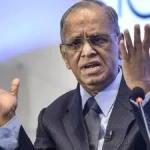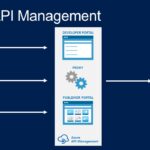Leadership development is a process that helps individuals identify and develop their abilities to lead effectively. It can be conducted through formal or informal programs, and it typically includes activities such as training, mentorship, and coaching.
Why leadership development matters:
Leadership development is important for a number of reasons. First, it helps develop the skills and knowledge that leaders need in order to be effective. Second, it helps leaders to identify their own strengths and weaknesses and to learn how to work with others. Third, leadership development can help organizations identify and groom future leaders. Finally, leadership development can help build team unity and commitment, as well as improve communication and collaboration within an organization.
Key components of an effective leadership development program:
There are a few key elements that are necessary for an effective leadership development program. First, there must be a clear need or purpose for the program.
- Goal Setting
It’s no secret that successful people set goals. But what may not be as well known is how they go about setting those goals. There is a process for goal setting that, when followed, increases the likelihood of achieving the goal.
The first step is to identify what you want to achieve. This may seem like a simple task, but it’s important to be specific. For example, rather than setting a goal to “lose weight,” set a goal to “lose 20 pounds.”
The second step is to develop a plan of action. This is where you’ll identify the steps you need to take to reach your goal. Going back to the example of wanting to lose 20 pounds, your plan might include exercising for 30 minutes every day and eating a healthy diet.
The third step is to set a deadline.
- Individualized Development Plans
An organization’s leadership development program should not be one-size-fits-all. A more effective approach is to create individualized development plans (IDPs) for each leader.
IDPs take into account the leader’s current skill set, experience, and goals. They also consider the organization’s needs and objectives. By aligning the leader’s development with the organization’s goals, IDPs help ensure that both the leader and the organization benefit from the leader’s growth.
Creating IDPs can be a time-consuming process, but it is worth the investment. Leaders who have IDPs are more engaged and motivated to develop their skills. They are also more likely to achieve their goals and contribute to the organization’s success.
- Continuous Learning Opportunities
As the workplace evolves, so must the skills of its leaders. To stay ahead of the curve, organizations need to provide continuous learning opportunities for their employees.
One way to do this is to create a leadership development program that offers a variety of learning experiences. This could include workshops, e-learning courses, and mentorship programs. By offering a variety of learning opportunities, employees can choose what works best for them and their schedules.
Another way to provide continuous learning opportunities is to encourage employees to attend conferences and seminars. This gives them the chance to learn from industry experts and network with other professionals.
Finally, organizations should create a culture of lifelong learning by encouraging employees to share their knowledge with others. This could be done through lunch-and-learns, brown bag sessions, or even informal conversations over coffee.
Creating your own leadership development program
Leadership development programs are not one-size-fits-all. You need to take into account the specific needs of your company and employees when designing a program. Here are a few tips to create an effective leadership development program:
1. Define what leadership means to your organization. This will help you identify the skills and qualities that you want to instill in your leaders.
2. Assess the current state of your leadership team. This will help you determine where your leaders need improvement and what areas they excel in.
3. Select the right delivery method for your program. There are many options available, so choose the one that will best fit the needs of your organization and employees.
4. Be sure to measure progress and results throughout the program.
Summary
An effective leadership development program can foster the growth and success of an organization by providing its leaders with the tools they need to be effective. An effective leadership development program is one that is tailored to the specific needs of the organization and its leaders. It should be designed to meet the challenges of the organization and its leaders, and it should be based on sound principles of adult learning. The most effective leadership development programs are those that are tailored to the specific needs of the organization and its leaders.









